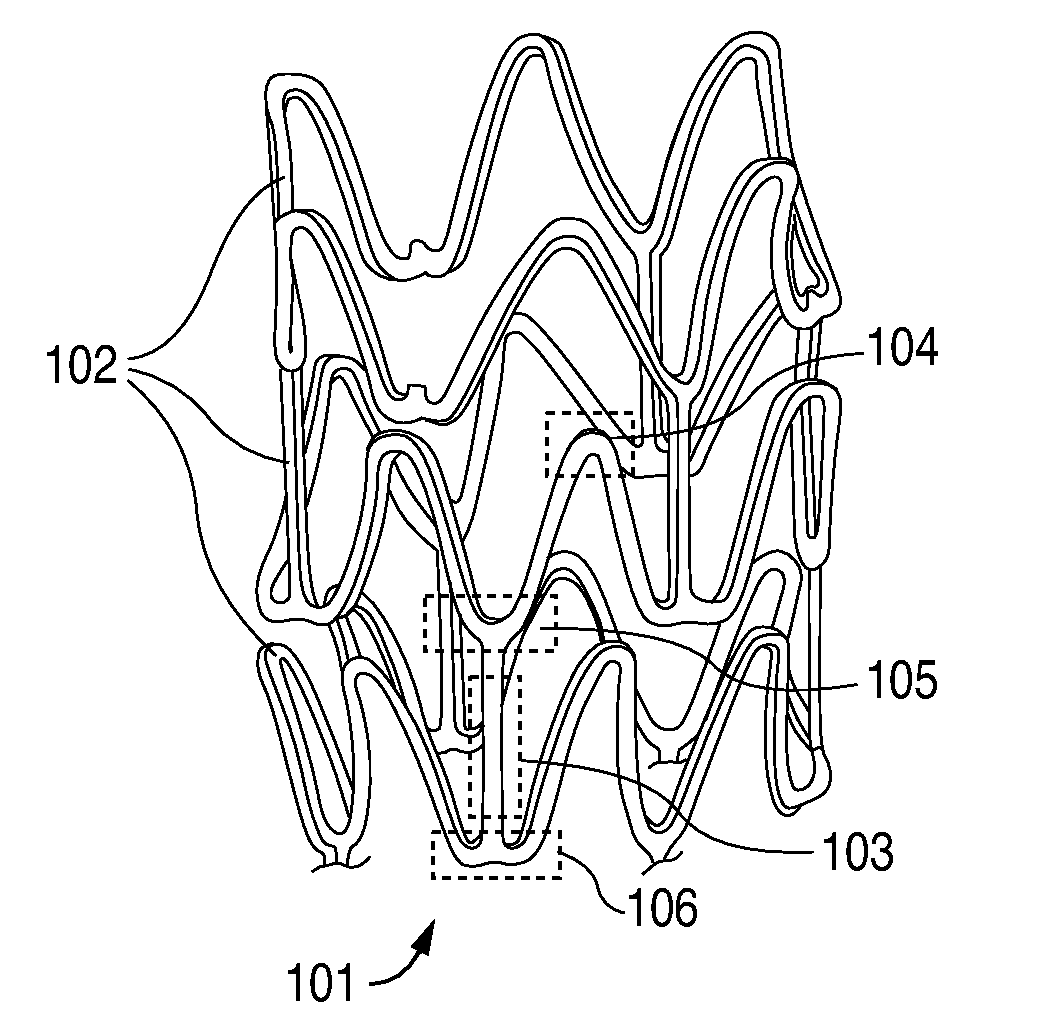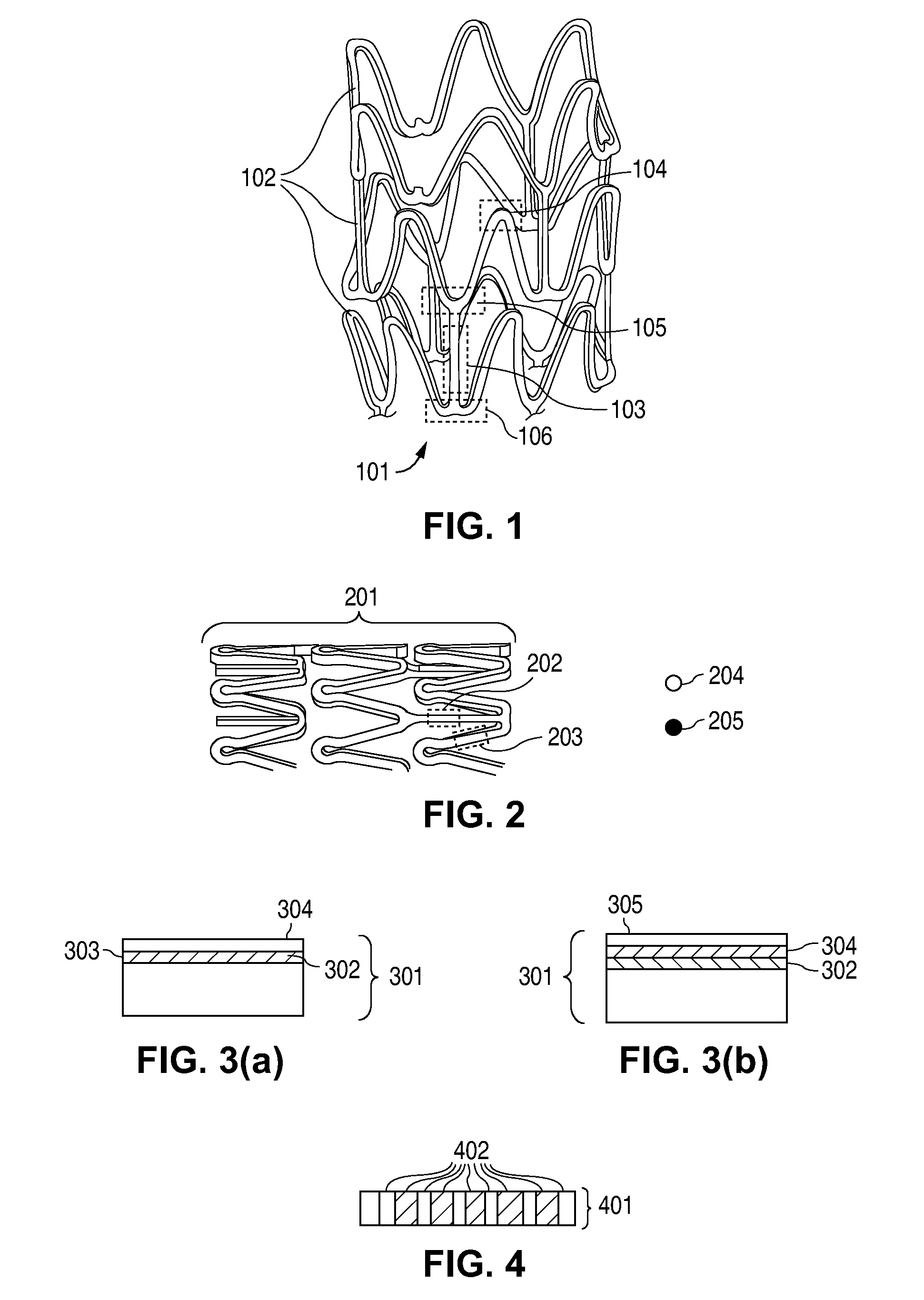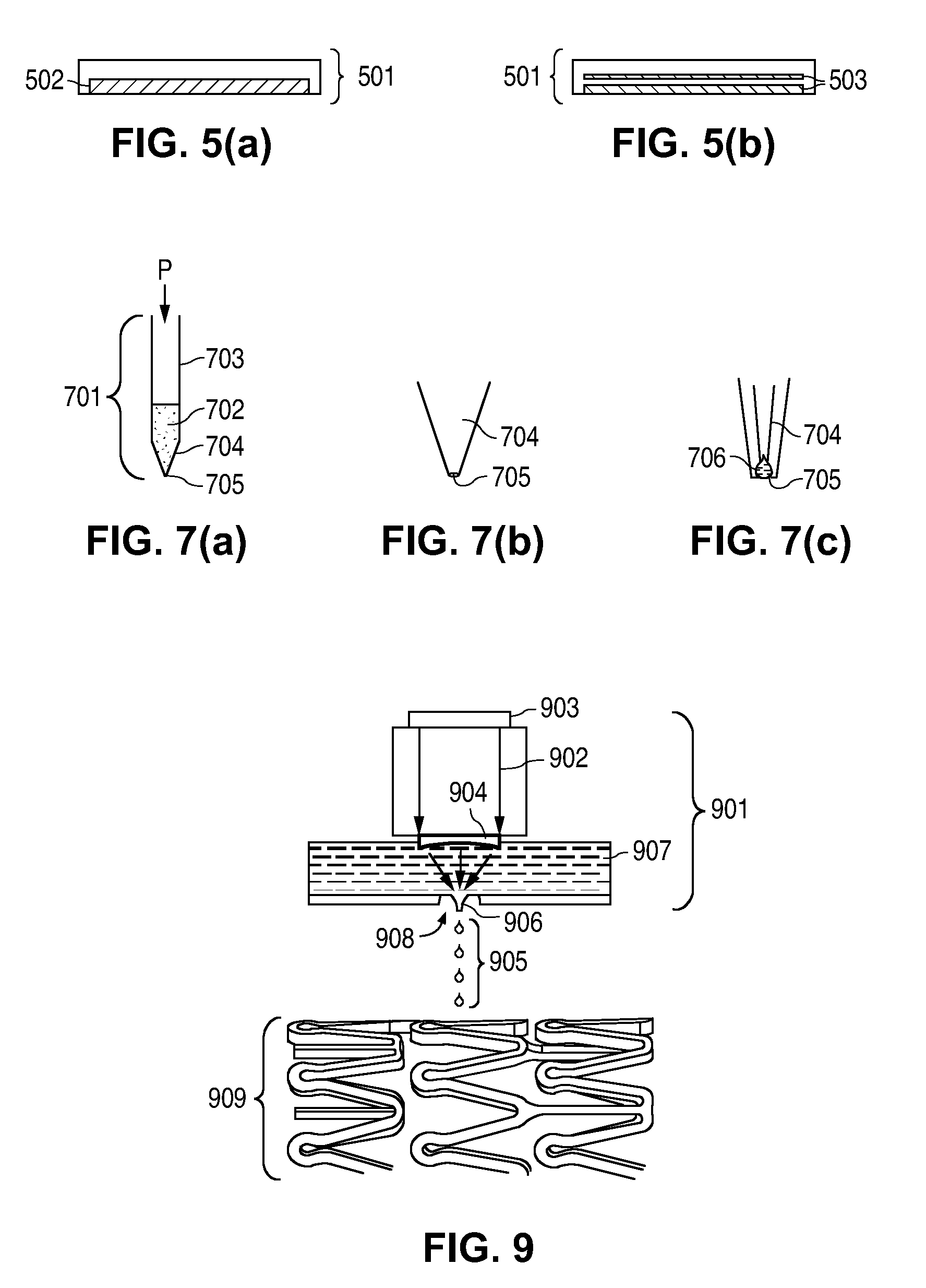Compositions for Medical Devices Containing Agent Combinations in Controlled Volumes
a technology of combination of agents and medical devices, applied in the field of medical devices, can solve the problems of difficult control of the release profile of agents from such a matrix, creating adverse effects within the subject, and releasing agents
- Summary
- Abstract
- Description
- Claims
- Application Information
AI Technical Summary
Benefits of technology
Problems solved by technology
Method used
Image
Examples
example 1
[0150]A medical article with two layers of coating can be fabricated to comprise everolimus and clobetasol by preparing a first composition and a second composition. The first composition can be an agent layer comprising a matrix of a first biodegradable polymer, e.g. poly(L-lactide), and clobetasol; and, the second composition can be an agent layer comprising a matrix of a second biodegradable polymer, e.g. poly(D,L-lactide), and everolimus.
[0151]The first composition can be prepared by mixing the first biodegradable polymer with the everolimus in chloroform to form a first coating composition. The first coating composition can be applied in monodispersed form onto an abluminal surface of a bare 12 mm VISION™ stent (Guidant Corp.) (“example stent”) and dried to form a first coating. The second coating composition can be prepared by mixing the second biodegradable polymer with the everolimus in methyl-ethyl-ketone to form a second coating composition. The second coating composition ...
example 2
[0153]A medical article with three layers of coating can be fabricated to comprise everolimus and tacrolimus by preparing a first composition, a second composition and a third composition. The first composition can be a primer layer of a mixture of a poly(hydroxyalkanoate) and tacrolimus. The second composition can be a pure agent layer of everolimus, and the third composition can be a topcoat layer of a poly(hydroxyalkanoate).
[0154]The first composition can be prepared by mixing about 2% (w / w) of the poly(hydroxyalkanoate) in absolute ethanol with an adequate amount of tacrolimus and can be applied onto the surface of the example stent using the acoustic ejector assembly technique to form a dry primer layer. The dry primer layer can contain about 100 μg of the poly(hydroxyalkanoate) combined with the adequate amount of tacrolimus. The second composition can be prepared by mixing about 2% (w / w) everolimus in absolute ethanol and applying the mixture to the primer layer using acousti...
PUM
| Property | Measurement | Unit |
|---|---|---|
| volume | aaaaa | aaaaa |
| molecular weight | aaaaa | aaaaa |
| molecular weight | aaaaa | aaaaa |
Abstract
Description
Claims
Application Information
 Login to View More
Login to View More - R&D
- Intellectual Property
- Life Sciences
- Materials
- Tech Scout
- Unparalleled Data Quality
- Higher Quality Content
- 60% Fewer Hallucinations
Browse by: Latest US Patents, China's latest patents, Technical Efficacy Thesaurus, Application Domain, Technology Topic, Popular Technical Reports.
© 2025 PatSnap. All rights reserved.Legal|Privacy policy|Modern Slavery Act Transparency Statement|Sitemap|About US| Contact US: help@patsnap.com



